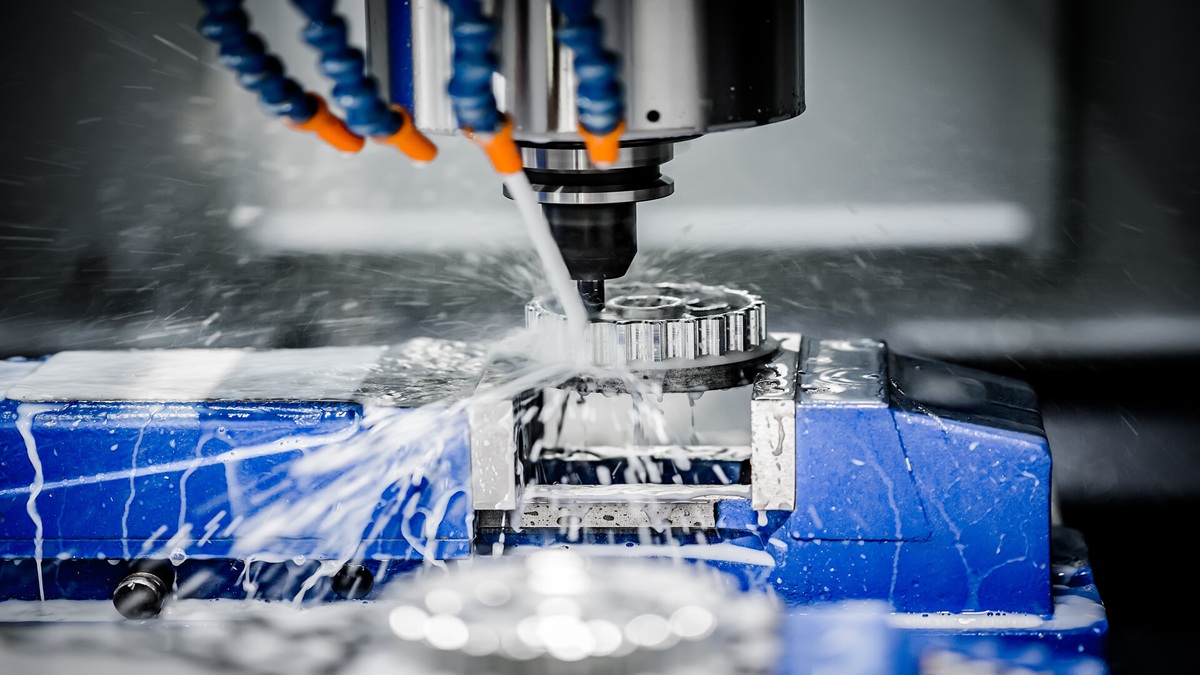Machine tools are the cornerstone of modern manufacturing, holding an irreplaceable role in core industries such as aerospace, semiconductors, medical equipment, and renewable energy. As product designs become increasingly sophisticated and quality standards grow more stringent, traditional machining approaches are no longer sufficient. For this reason, the precise planning provided by CAD/CAM software, together with the stable high-speed cutting power of direct-drive spindles, has emerged as the foundation of high-precision machining. This article explores the synergy between software and hardware — from the digital blueprint created by CAD/CAM, to the precise execution enabled by direct-drive spindles, and finally to closed-loop control and global application trends — offering a comprehensive perspective on the technological developments shaping the machine tool industry.
The Brain and Blueprint of Machining: CAD&CAM
- CAD (Computer-Aided Design): Engineers use CAD software to build 3D product models, defining geometry, dimensions, and tolerances, which form the foundation of precision machining.
- CAM (Computer-Aided Manufacturing): CAM software interprets CAD models to generate toolpaths, set spindle speed and feed rate, perform post-processing into G-code, and simulate machining to detect potential issues.
Direct-Drive: The Core of High-Precision Execution
Conventional belt or gear transmissions introduce drawbacks such as backlash, vibration, thermal deformation, and speed limitations. By eliminating these components, direct-drive spindles, which integrate the motor and spindle into a single unit, deliver several critical advantages:
- High Rigidity and Accuracy: The absence of backlash ensures exceptional positional precision and repeatability. The direct coupling also enables rapid response, translating CNC commands into instantaneous motion.
- High-Speed and Stable Rotation: Capable of reaching ultra-high speeds — often in the tens of thousands of RPM — direct-drive spindles maintain remarkable stability. This not only improves cutting efficiency but also achieves superior surface finishes.
- Reduced Thermal Deformation: With fewer frictional elements, less heat is generated, simplifying thermal management. As a result, thermal expansion is minimized, ensuring machining consistency and final dimensional accuracy.
Together, these characteristics ensure that 100% of the motor’s power is transmitted directly to the cutting tool, making direct-drive spindles an indispensable foundation for achieving ultra-high-precision machining.
System Integration: Closed-Loop Control Between Software and Hardware
Beyond the precise blueprint provided by CAD/CAM and the high-speed stable cutting of direct-drive spindles, achieving ultra-high precision requires a complete system built on CNC controllers, servo drives, encoders, and linear scales to form a closed-loop feedback system:
- CNC controllers read G-code instructions and command the servo system to move with precision.
- Encoders and linear scales provide real-time feedback of axis position and speed, allowing the controller to compare commanded versus actual positions and make instant corrections.
- Rigid machine structures and thermal compensation technologies resist cutting forces and control the effects of thermal expansion on machining accuracy.
- Dynamically balanced spindles minimize vibration during high-speed rotation, enhancing surface quality.
This closed-loop system ensures that tool motion closely follows the ideal path calculated by CAM software, achieving seamless integration between software blueprints and hardware execution.
Global Trends and Applications
- Japan: Precision and Reliability-Oriented
Collaboration with CAD/CAM vendors, combined with rigid machines and precision spindles, emphasizes stability in mold and aerospace machining.
- Germany: Digitalization and Industry 4.0
Machine builders integrate CAD/CAM with direct-drive spindles and IoT platforms to enable smart factories.
- USA: Efficiency and Multi-Tasking
Focus on multi-tasking centers, leveraging CAD/CAM automation and high-speed spindles for aerospace and medical parts.
- Taiwan & Korea: Flexibility and Cost Competitiveness
Firms highlight CAD/CAM integration with direct-drive spindles, balancing precision and cost for semiconductor and electronics sectors.
Globally, nations are developing distinct precision machining strategies centered on the deep integration of CAD/CAM and high-performance hardware.
Conclusion
The future of high-precision machining lies in the seamless integration of digital and physical domains. It starts with the digital blueprint of CAD/CAM, is executed by the power of direct-drive spindles, and is perfected by the real-time feedback of a closed-loop system. This unified approach has become the global standard, defining a new era where software, hardware, and data work in harmony to meet the exacting demands of modern industries.


.jpg)










.jpg)